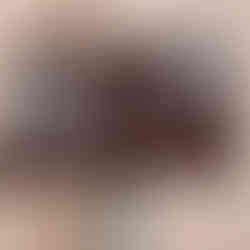Church of Saint Anna – Chiesa di Sant’Anna
- Maria Scuor
- Dec 24, 2022
- 4 min read
Scorri a basso per l’italiano
As you promenade through the pedestrian only historical center of Arona, Via Cavour you see a mix of eclectic shops, clothing stores, shoe stores, restaurants and much more. There is also the beautiful Church of Saint Anna. This church was commissioned by the archpriest Isidoro Medone between 1721-1745.
At the time the church was placed between the two medieval towers of Saint Anna and Portello. Being close to the water for proximity to fishermen as Saint Anna was identified as the maritime saint, protecting fishermen, sailors and invoked against storms. The construction completed in 1949 and affirmed by pastoral visit of Cardinal Pozzobonelli.
It wasn’t until 1841 that the façade was completed, which had remained rustic until then. At the same time, the vaults of the first two entrance chapels were decorated: the one on the right (currently dedicated to Santa Rita, whose statue is placed in a floral frame) was originally in honor of the Madonna. The chapel to the left is dedicated to the Passion of Christ and, in addition to the statue of the dead Christ, there are also the frescoed symbols of the Passion.
At the same time, Arona painter Giuseppe de Albertis painted the alterpiece, depicting Saints Anna, Joachem with Mary as a young girl. It is stated that Anna and Joachem are the parents of the virgin Mary. And the belief arose that Mary was conceived of Anna without sin. This belief in the Immaculate Conception states that God preserved Mary’s body and soul intact and sinless, from her first moment of existence.
On October 4, 1868, Lago Maggiore had a disastrous flood and it reached the church. It did considerable damage to the walls as the flood was as high as two meters. The Aronese people stepped up and cleaned up and restored as much as they could. In 1912, Aronese painter Giacomo Paracchini, professor at the Brera academy in Milan, painted the frescos within the church and it was deemed a work of artistic level by critics.
However, the state of the church had deteriorated over the years due to other floods, and with the last one in 2000, high humidity and leaks from the roof damaged a lot of the interior. Thankfully Anita and Sandra Prina bequest money to restore the church and many other well-know and anonymous Aronese donated and restoration started. By 2008, the church had been restored to its original beauty.
Walking through the church, you can see the love that went into each piece. It truly is an amazing work of art dedicated to the Virgin Mary.

Chiesa di Sant’Anna
Passeggiando per il solo pedonale, centro storico di Arona, Via Cavour si vede un mix di negozi eclettici, negozi di abbigliamento, negozi di scarpe, ristoranti e molto altro. C'è anche la bellissima Chiesa di Sant'Anna. Questa chiesa fu commissionata dall'arciprete Isidoro Medone tra il 1721-1745.
All'epoca la chiesa era collocata tra le due torri medievali di Sant'Anna e portello. Essendo vicino all'acqua per vicinanza ai pescatori, perche Sant'Anna è stata identificata come la santa marittima, proteggendo pescatori, marinai e invocata contro le tempeste. La costruzione terminò nel 1949 e si affermò con la visita pastorale del cardinale Pozzobonelli.
Era nel 1841 che fu completata la facciata, ed è rimasta rustica fino ad allora. Allo stesso tempo, furono decorate le volte delle prime due cappelle d'ingresso: quella a destra (attualmente dedicata a Santa Rita, la cui statua è collocata in una cornice floreale) era originariamente in onore della Madonna. La cappella a sinistra è dedicata alla Passione di Cristo e, oltre alla statua del Cristo morto, ci sono anche i simboli affrescati della Passione.
Allo stesso tempo, il pittore di Arona Giuseppe de Albertis dipinse l'altare, raffigurante Santi Anna, Gioacchino con Maria da ragazza. Si afferma che Anna e Gioacchino sono i genitori della vergine Maria. E sorse la credenza che Maria fosse stata concepita da Anna senza peccato. Questa fede nell'Immacolata Concezione afferma che Dio ha preservato il corpo e l'anima di Maria intatti e senza peccato, fin dal suo primo momento di esistenza.
Il 4 ottobre 1868, il Lago Maggiore ebbe una disastrosa alluvione e raggiunse la chiesa. Ha fatto notevoli danni alle pareti poiché l'alluvione era alta fino a due metri. Il popolo aronese si fece avanti e ripulì e restaurò il più possibile. Nel 1912, il pittore aronese Giacomo Paracchini, professore all'accademia di Brera a Milano, dipinse gli affreschi all'interno della chiesa e fu considerata un'opera di livello artistico dalla critica.
Tuttavia, lo stato della chiesa si era deteriorato nel corso degli anni a causa di altre inondazioni, e con l'ultima nel 2000, l'elevata umidità e le perdite dal tetto hanno danneggiato gran parte dell'interno. Per fortuna Anita e Sandra Prina invocano denaro per restaurare la chiesa e molti altri noti e anonimi aronesi donano e iniziano i restauri. Nel 2008, la chiesa era stata riportata alla sua bellezza originale.
Camminando attraverso la chiesa, puoi vedere l'amore che è andato in ogni pezzo. È davvero un'incredibile opera d'arte dedicata alla Vergine Maria.


















Comments